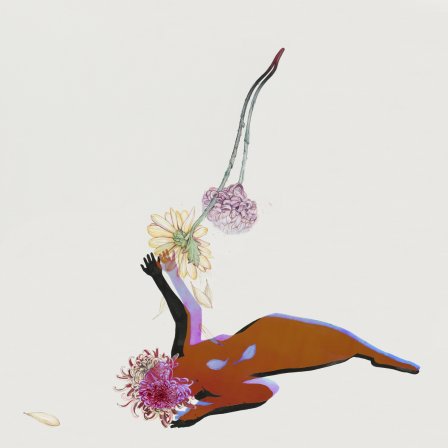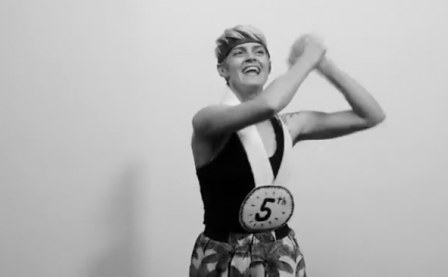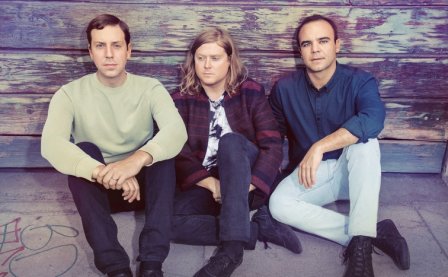“Instead of sharpening punk and post-punk’s cutting edge, these bands blunted it; rather than provoke, oppose, and negate mainstream pop tastes, they seem to have reworked their sounds to accommodate these norms. And they accommodated them quite well — these were all charting, and often chart-topping, singles. If anything, their sound had become excessively normal.”
– Robin James, “Neoliberal Noise: Attali, Foucault, & the Biopolitics of Uncool”
“When a rock ‘n’ roll group attains success, there is typically a fascination with its origins. “How did such a phenomenon come to pass?” everyone asks, simply because making a group is so difficult, and finding persons with the correct creative chemistry and sense of mutual commitment so unusual. The origin stories of rock & roll groups have therefore taken their place alongside the historical and religious myths of time immemorial.”
- Ian F. Svenonius, Supernatural Strategies for Making a Rock ‘n’ Roll Group
My introduction to Future Islands was like that of many. One way or another, I found the clip of Samuel T. Herring crooning, howling, and growling for Letterman and his audience. It’s one thing to do all the moving that a seated mid-day studio audience lacks, but it’s another to gesticulate to the heavens and hope the divinity transcends the TV set. Here, watch it again:
It’s a gimmicky hook. It’s also stunning, near virtuosity, and bafflingly difficult to interpret. Herring carries a clumsy masculinity through his stoic on-stage drama, invoking Morrissey as Hamlet carrying Yorick’s skull. I remember — later that summer — watching Herring lock eyes with the missing skull of Yorick (which he’d just extracted from his throat, through his jaw, by way of representation, a trick of the body), sun setting behind the main stage of FYF Fest, situated on the black top parking lot of Los Angeles’s Olympic Park. Perhaps he was singing the descent of the then-recent “Fall From Grace”: “We slowly fade away/ We slowly fade away.” Herring presented an endless ricochetting epiphany. He seemed to be relentlessly surged and resurged by the washy, unsexy post-post-punk that sat below him. He was impressive. He was devoted. He was reaching new heights, and he was decidedly uncool.
That was 2014 and, of course, this is now. The Far Field arrives with those several years compressed to a few unfazed blinks. Future Islands (not as a band, but as a piece of its with its own momentum and trajectory) doesn’t seem aware of a world outside of it. The Far Field is hardly a new chapter, just the dialogue beyond a scene break. With three years compressed to the tiny stars of a mid-page three-asterisk ellipsis, we start to feel that the entire act (the length of a band’s career) has already been written. With a slow fade back to consciousness, Future Islands release the breath they took in 2014 with Singles. “Aladdin” sounds like nothing out of the ordinary, introduces no new elements. The Far Field continues with very few ruptures of this blanket texture of uniformity.
And such would be a clear element of critique if it weren’t exactly what generates critical interest for the band in the first place. Future Islands appear to value consistency and brand recognition far more than the production of singular punctuated moments (singles, hits, hooks, solos, drops). They have encircled their own style that appears either thoughtfully restrained or thoughtlessly constrained (by way of shallow influences and/or uncreative methodology). Their earlier output as well as Herring’s surprising fanaticism toward underground hip hop leads me to believe the former is at play. So Future Islands circumlocutes the sound and the structures at their essence without a flag-bearing essential hit to anchor the operation.
Here, my mind travels to The Ramones who, of course, had many standout hits, but who never seemed to fully tire of the formula and chord progressions that produced them. Imagine a hypothetical Ramones song that has never been written but of which every other Ramones song is a representation. Or perhaps imagine the creative impulse that guided The Ramones to be like a good starter for sourdough bread, sometimes better nourished, sometimes more successfully rendered into bread but always the same at its center. The same can be applied to Nickelback, Morton Feldman, Kool Keith, Agnes Martin, Emily Dickinson, Napalm Death, Gertrude Stein, and the mid-to-late paintings of Monet. Many of which have certain well-renowned singular works but are artists who really can’t be understood without the context of their oeuvre.
As such, nothing on The Far Field is remotely innovative or boundary pushing (in the broad scope of music at large as well as the narrow scope of Future Islands’ own narrative). It has its brief dissonances, odd features, and outliers (the strange dip in the chorus melody of “Beauty of the Road,” the background effects on “Cave,” the Cyndi Lauper bounce of “North Star,” the carefully detuned synth behind “Ancient Water,” and Debbie Harry’s feature on “Shadows”), but ultimately, it is safe and moralistic without suggestion otherwise. Even as a vessel for Herring’s performative antics (which really serve as the hook of it all), the whole presentation is relatively shockless and nonsubversive. The Far Field is carried by light catharsis, diffused and mild-tempered fun, virtuosic vocal delivery, and steel-clean production.
The album’s largest fault is that it is generally unremarkable despite this adept musicianship and heartfelt approach. This fault, however, surrounds us daily as a Fordist argument for the convenience, consistency, and comfort of reliable product as we come to disregard whatever it is that that product lacks (Ford Motors, Starbucks, McDonald’s, IKEA, Vans, Coca-Cola), and that ultimately evolves to the hollow brand for which product is just about besides the point (Facebook, Buzzfeed, Medium, other less blatantly dubious web services as well as several of the brands already listed above). As such, Future Islands tastefully brush shoulders with the unsensational and guileless media available from a screen in Denny’s or at the gas pump. There is so much more to Future Islands that is worth dissection: Herring’s complex dramatic performance of a gyrational (anti-)masculinity, the politics of the publicly hard-working band, a thorough analysis of what really is going on behind all the on-stage gestural drama, and an evaluation of the act of selling out as it operates currently. While these avenues interest me, they are superfluous to any album Future Islands has produced. Much like how the quality and content of a new Frappuccino® flavor is never more essential to its release than the fact that it is new (thus perpetuating ad campaigns, novelty branding, and company growth), The Far Field potentiates further exploration for Future Islands as a performance group. Thus is the logical extreme of the classic record production cycle (e.g. release an album and tour in support of the album and repeat with singles and television appearances along the way) for the pragmatic post-industry artist.
More about: Future Islands




